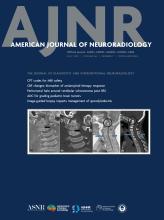Case of the Week
Section Editors: Matylda Machnowska1 and Anvita Pauranik2
1University of Toronto, Toronto, Ontario, Canada
2BC Children's Hospital, University of British Columbia, Vancouver, British Columbia, Canada
Sign up to receive an email alert when a new Case of the Week is posted.
March 30, 2017
Medulloblastoma with Extensive Nodularity
- Background:
- According to the 2016 WHO classification, medulloblastomas are classified into 5 histological groups: classic, desmosplastic/nodular, with extensive nodularity, large cell/anaplastic, and non-specified.
- One of the most important changes of this classification is the incorporation of 4 genetic (molecular) medulloblastoma subgroups: WNT-activated, SHH-activated, and the numerically designated “group 3” and “group 4”.
- There is a long list of the many possible histological–molecular combinations. The histologically defined medulloblastoma with extensive nodularity is related to the following genetic profile: SHH-activated and TP53 wildtype.
- Even though the most common malignant brain tumor of childhood is the medulloblastoma, the group with extensive nodularity is very rare.
- The median age of diagnosis in medulloblastomas is 9 years; however, this variant occurs in very young children (younger than 3 years old). This variant is also characterized by a typical MRI pattern with grape-like enhancement and by a relatively better outcome.
- Clinical Presentation:
- Symptoms related to raised intracranial pressure as a result of obstructive hydrocephalus
- Key Diagnostic Features:
- Children younger than 3 years old
- Infratentorial midline mass arising from vermis with restricted diffusion
- Nodular enhancing grape-like appearance on CT scans or MR images
- In our case, the result was medulloblastoma NOS (due to insufficient material for a more accurate diagnosis) and no molecular study was performed.
- Differential Diagnoses:
- Regarding the grape-like enhancing pattern in a posterior fossa lesion in pediatric patient:
- Atypical teratoid rhabdoid tumor: not distinguishable by imaging
- Atypical choroid plexus carcinoma: hemorrhagic areas are more common
- Dysplastic gangliocytoma of the cerebellum or Lhermitte-Duclos disease: minimal or no gadolinium enhancement; different age group; may be associated to bone remodeling
- Other pediatric posterior fossa masses:
- Other medulloblastomas: grape-like appearance absent; older children
- Ependymoma: extends through the Luschka and Magendie´s foramina; no restricted diffusion; older children; calcification and hemorrhage are more common
- Pilocytic astrocytoma: typically cystic mass with enhancing mural nodule; arises from cerebellar hemisphere; no restricted diffusion; older patients
- Regarding the grape-like enhancing pattern in a posterior fossa lesion in pediatric patient:
- Treatment:
- Surgical resection, radiation therapy and chemotherapy; usually these tumors have a good response to radiotherapy. This histological type has a better prognosis.











